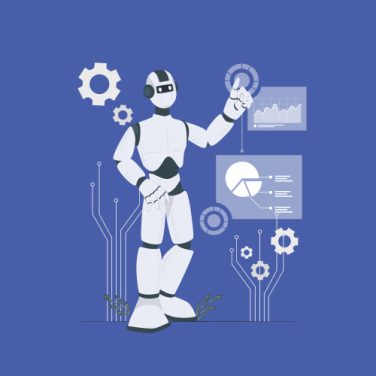An AI resume parser uses machine learning and Natural Language Processing to convert unstructured candidate resumes into structured data.
In traditional recruitment, HR teams manually review CVs, extract fields, and enter data into systems—a process prone to human error and delays. An AI resume parsing software streamlines this workflow, reducing repetitive tasks and improving data accuracy.
Manual data extraction challenges include inconsistent formatting, missing fields, and varying terminology. Those hurdles prolong hiring cycles and create bottlenecks in Applicant Tracking Systems (ATS). Automating resume parsing with reliable resume parser technology ensures consistent data capture across diverse document formats.
Business impact metrics highlight key benefits:
- Time Saved: Parsing engines process hundreds of resumes in seconds, freeing recruiters to focus on candidate engagement.
- Error Reduction: Automated field mapping cuts manual entry mistakes, improving data integrity.
- Candidate Experience: Faster response times and seamless application journeys enhance employer branding.
Modern AI resume parsing software supports multiple languages and file types such as PDF, DOCX, and scanned images. This flexibility allows global teams to handle multilingual resumes with OCR fallback, ensuring no candidate is overlooked.
By automating extraction, companies transform recruitment processes, delivering precise applicant data into HR systems in real time.
TL;DR: Key takeaways
- Data Structuring: AI resume parser leverages machine learning and natural language processing to extract candidate details automatically.
- High Accuracy: Modern ai resume parsing software achieves over 90% F1 scores in benchmark tests.
- ATS Integration: Seamless integration and data mapping ensure structured fields align with applicant tracking system schemas.
- Best Practices: Clear field validation, pilot testing across formats, and continuous monitoring drive parsing reliability.
- Compliance & Fairness: Tools support audit trails, data privacy standards, and bias mitigation strategies.
Implementing a resume parser transforms recruitment by automating data capture, enabling faster decision-making and deeper analytics. Key metrics to track include parsing rate, field completeness, and error rate over time.
Teams deploying AI resume parsing online benefit from accelerated hiring workflows and improved candidate experiences.
How AI resume parsers work: ML and NLP techniques
The AI resume parser pipeline consists of a parsing engine, named-entity recognition, and classification stages.
The parsing engine ingests unstructured resume documents—PDFs, DOCX, or images—and converts them into raw text. Next, Named-Entity Recognition (NER) models identify key sections such as contact information, work history, and education. Finally, classification algorithms map extracted entities to standardised fields, ready for ingestion into an applicant tracking system.
Initial parsing engine components use OCR for scanned documents, converting images to text with character recognition accuracy above 95%. Preprocessing steps normalise font variations and remove noise. Metadata extraction captures document properties such as creation date and author information.
Once text is prepared, the NER stage leverages custom dictionaries and embedding-based taggers to locate entities. Classification models then assign entities to target fields in the ATS mapping configuration.
Machine Learning models
Contemporary resume parser engines rely on supervised machine learning models trained on diverse resume datasets. These models learn patterns in formatting, keyword usage, and layout to detect entities like job titles and skills.
Compared to traditional rule-based systems, ML models adapt to new resume structures without manual rule updates. Algorithms such as Conditional Random Fields (CRF) and transformer-based classifiers power high-precision extraction, enabling ai resume parsing software to maintain accuracy across formats and languages.
Natural Language Processing layers
NLP techniques play a critical role in preprocessing and contextual analysis.
The pipeline begins with tokenisation, splitting text into words and punctuation. Part-of-speech tagging assigns grammatical roles to tokens, differentiating verbs, nouns, and modifiers.
Contextual embedding models capture word meaning in relation to surrounding text, improving recognition of unconventional job titles or domain-specific terminology. Phrase-level and document-level embeddings enable the parser to understand context, reducing false positives.
Continuous learning mechanisms ensure the AI resume parser improves over time. Feedback loops ingest manual corrections from recruiters to retrain models, addressing misclassifications and emerging resume trends.
Monitoring analytics track metrics such as parsing rate and error rate, triggering automated retraining cycles. This iterative process allows a resume parser to adapt to evolving document styles, boosting long-term accuracy and compliance.
Retraining cycles often utilise active learning, where models select ambiguous extractions for human review. This targeted approach maximises training efficiency and reduces annotation effort.
Over time, hybrid systems combine rule-based fallbacks with ML confidence thresholds to minimise critical errors in high-stakes fields such as compliance or certifications.
Accuracy metrics and benchmarks
Industry benchmarks for parsing accuracy measure precision, recall, and F1 score in blind tests involving thousands of resumes.
Precision evaluates the proportion of correctly identified fields out of total extracted. Recall measures the proportion of actual fields correctly extracted. F1 score represents the harmonic mean of precision and recall, providing a balanced metric for vendor comparison.
Enterprise deployments often include custom fields for certifications, security clearances, or region-specific qualifications. Parsing engines equipped with customisable schemas allow teams to extend NER models and retrain on internal data, achieving specialised accuracy metrics beyond standard benchmarks. Vendors offering active learning frameworks enable rapid adaptation to niche requirements without compromising core performance.
Data quality and resume formats significantly influence parsing results. Uniformly structured resumes with clear headings yield higher precision, while unconventional layouts may reduce recall. OCR accuracy for scanned documents also impacts overall performance and feedback loops. Vendors often report benchmarks on standard datasets; real-world performance can vary based on applicant pool and document diversity.
To maintain high parsing reliability, organisations should track the following metrics:
- Parsing Rate: Percentage of resumes successfully processed without manual intervention.
- Error Rate: Proportion of missing or misclassified fields requiring human correction.
- Fields Completeness: Average number of key fields (e.g., contact, experience, education) extracted per document.
Ultimately, parsing benchmark results guide procurement decisions, but real-world pilot tests with actual candidate resumes yield the most accurate performance indicators.
Integration with Applicant Tracking Systems
Integration of an AI resume parser into an Applicant Tracking System (ATS) can follow two primary approaches: API-driven integration or plugin-based connectors.
API-driven integration uses RESTful endpoints to submit resumes and retrieve structured JSON output, offering flexibility in data handling and error management. Plugin-based solutions install directly within the ATS interface, enabling point-and-click configuration without custom coding. While plugins offer faster deployment, APIs deliver finer control over parsing workflows and retry logic.
Data mapping aligns parsed fields with the ATS schema. Organisations define mapping rules that associate NER output—such as full name, contact details, skills, and job history—to corresponding ATS fields. Field validation rules enforce data types and mandatory fields, catching anomalies before insertion. Mapping configurations should support nested structures for roles, certifications, and education entries, ensuring comprehensive data representation.
Handling custom fields and compliance requirements is critical. Industries like healthcare or finance may require license numbers or security clearances. Custom schema extensions allow the resume parser to extract and normalise these specific entities. Compliance mandates—such as GDPR and CCPA—demand audit trails and data encryption at rest and in transit. Reliable parsing solutions include built-in logging and encryption to satisfy regulatory standards.
To ensure reliable ATS integration:
- Implement retry and fallback mechanisms for parsing failures.
- Version control mapping configurations to track schema changes.
- Validate parsed data in staging environments before production rollout.
- Monitor API performance metrics—latency, throughput, and error rates—to maintain SLAs.
Some ATS platforms limit API call rates, while others provide plugin marketplaces. Hybrid models leverage plugins for standard fields and APIs for advanced parsing tasks, balancing ease of setup with customisation.
Implementation best practices and pitfalls
Successful deployment of an AI resume parser hinges on clear planning, rigorous testing, and continuous quality management. Below are recommended best practices and common pitfalls to avoid when implementing parsing solutions:
- Establish clear data mapping and field validation rules: Before integration, document all target fields in the ATS schema and define mapping rules for each entity. Use sample resumes to validate mapping logic, ensuring edge cases like multiple phone numbers or nonstandard date formats are handled. Implement field-level validation—such as email and phone number patterns—to catch extraction errors. Clearly documented mappings reduce misalignment between parsed data and business requirements.
- Pilot with diverse resume formats and languages: Conduct pilot tests with a representative sample of 100–500 resumes, covering varied layouts, file formats, and languages. Measure precision, recall, and F1 metrics during the pilot. Identify formats that underperform and adjust parser configurations or preprocessing steps. Include OCR testing for scanned documents. Piloting early reveals format-specific issues and prevents wide-scale data quality problems post-deployment.
- Monitor parsing accuracy and set up retraining cycles: Set up dashboards to track key metrics—parsing rate, error rate, and fields completeness—on an ongoing basis. Configure alerts for drops in accuracy or spikes in manual corrections. Integrate user feedback mechanisms where recruiters can flag misparsed fields. Establish retraining cycles, leveraging manual corrections for supervised learning. Regular retraining ensures the parser adapts to evolving resume styles and emerging terminology.
- Beware of misclassification, missing fields, and training bias: Common pitfalls include over-reliance on rule-based logic, causing brittle parsing when resume layouts change. Missing fields—such as secondary skills or certifications—can lead to incomplete candidate profiles. Training data bias, if not diverse, may result in reduced performance on underrepresented applicant groups. Mitigate bias by including diverse resumes in training sets and auditing model outputs for fairness and compliance.
Adhering to these best practices positions recruitment teams to leverage ai resume parsing software effectively, delivering high data accuracy and scalable operations.
Scaling AI resume parsing: Data mapping and testing
Scaling AI resume parsing from 100 to 10,000 resumes per month requires robust data pipelines, testing frameworks, and monitoring systems. Below is an example of how organisations can achieve high throughput parsing with quality assurance:
- Case study: 100→10,000 resumes monthly: An international staffing firm scaled parsing by orchestrating batch processing with message queues. Resumes were ingested into a raw document store, then dispatched to parsing microservices. Initial throughput of 100 documents per minute increased to 1,000 per minute by adding parallel compute nodes. Error rates remained below 3% through automated validation and fallback manual review for flagged anomalies.
- Testing frameworks: Implement unit tests for entity extraction rules—verifying that specific input patterns map to correct fields. Develop end-to-end quality checks that compare parsed JSON against ground-truth annotations. Automate regression tests on weekly builds to detect performance regressions. Utilise synthetic and real-world resume samples for comprehensive coverage, including edge cases like nested education entries and unconventional section headings.
- Data pipeline – cleaning, enrichment, storage: Raw resume files are cleaned—removing metadata noise and normalising text encodings. Enrichment modules annotate locations, skills, and certifications using external taxonomy services. Parsed outputs are stored in a data warehouse, with separate staging and production schemas. Columns for parse timestamp, document source, and parsing engine version support traceability and rollback if needed.
- Continuous monitoring dashboards: Dashboards track parsing throughput, latency, success rates, and field completeness over time. Visual alerts highlight deviations from baseline performance. Drill-down capabilities allow teams to inspect sample failures by error type—OCR failures, NER misses, or classification errors. Integration with incident management tools automatically notifies the data science team when thresholds are breached.
- Scaling practices: Employ auto-scaling clusters to match parsing load, and implement cost monitoring to optimise resource usage. Use distributed queues and stateless parsing services for fault tolerance and parallel processing during peak application periods.
Handling multilingual resumes and file formats
Modern AI resume parsers support 50+ languages and handle diverse file formats. Multilingual NLP models and language-agnostic embeddings allow extraction from resumes in English, Spanish, Mandarin, and beyond. Parsers detect document language automatically and route text through appropriate tokenisation and tagging pipelines.
Supported file formats include PDF, DOCX, TXT, and XLSX. Native text-based formats yield the highest extraction accuracy, while PDFs require specialised parsing libraries to handle embedded fonts and layout artifacts. Excel spreadsheets may contain resume URLs or tabular data; parsers extract cell contents and map them to predefined fields.
For scanned or image-based resumes, Optical Character Recognition (OCR) is essential. OCR engines convert images into text with up to 98% accuracy on clean scans. Preprocessing filters—such as de-skewing and noise reduction—improve OCR output. Integrating OCR as a fallback ensures no resume is left unprocessed.
Designing fallbacks and manual review workflows addresses parsing exceptions. Automated systems should flag low-confidence extractions—such as ambiguous date ranges or unrecognised characters—for recruiter review. A user interface that highlights problematic fields accelerates correction and feedback. This hybrid approach maintains high throughputs while preserving data quality.
Many parsers accept attachments, ZIP archives, and URLs. Batch upload endpoints handle mixed file types and return error codes for unsupported formats, enabling upstream systems to validate content types before processing.
By combining robust OCR, flexible format handling, and human-in-the-loop workflows, organisations can reliably parse resumes from global talent pools without sacrificing accuracy or compliance.
Future trends in AI resume parsing
Emerging trends include zero-shot parsing, where transformer-based models handle new resume formats without labelled training data. Leveraging architectures like GPT and BART enables parsers to generalise entity extraction to unseen document layouts and languages, reducing dependency on extensive annotated datasets.
Ethical AI considerations are shaping parser development. Fairness frameworks ensure model explainability and bias mitigation, while compliance with GDPR and CCPA requires transparent data processing workflows and auditability. Data minimisation and secure model governance will become industry standards.
Integration with end-to-end talent platforms and conversational chatbots enhances the candidate journey. AI assistants can collect additional candidate data interactively, feed it back into parsing engines bidirectionally, and deliver instant feedback to applicants in over 100 languages.
Continuous learning and AI orchestration frameworks will automate retraining cycles and pipeline adjustments. Orchestrators dynamically allocate parsing jobs to specialised models based on document type, optimising resource usage and maintaining peak performance across evolving resume styles and cost efficiency.
Preparing for the next wave means adopting modular parsing architectures, investing in data governance, and collaborating with vendors on roadmap features. Early adopters will gain a competitive edge by capturing richer candidate insights and driving impactful hiring outcomes.



